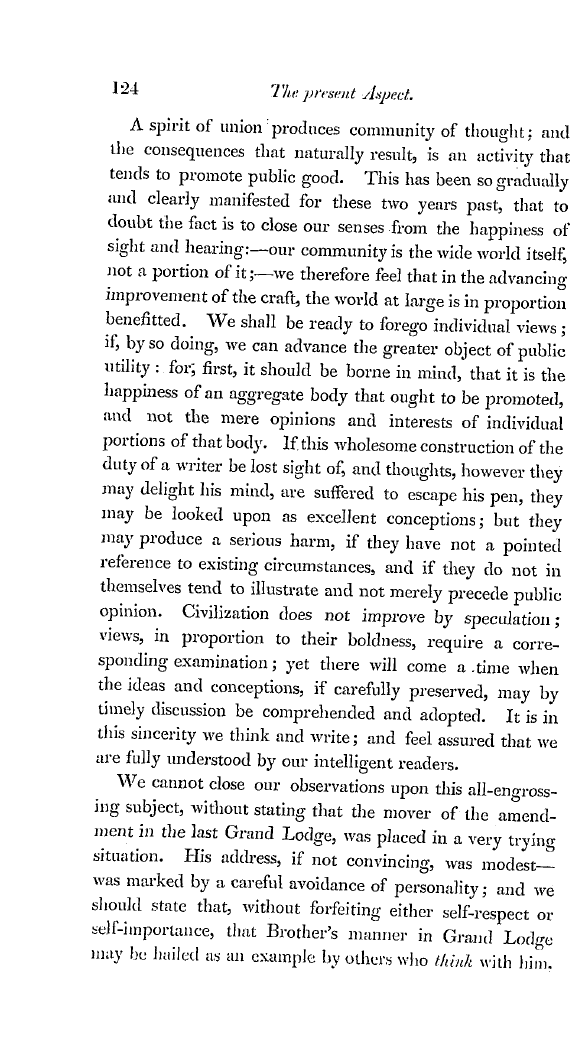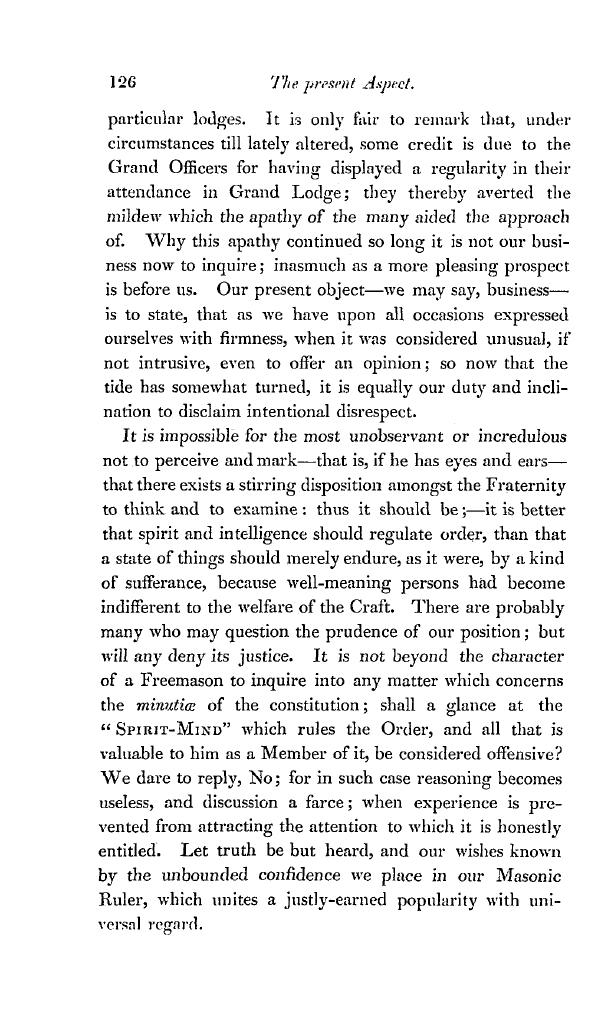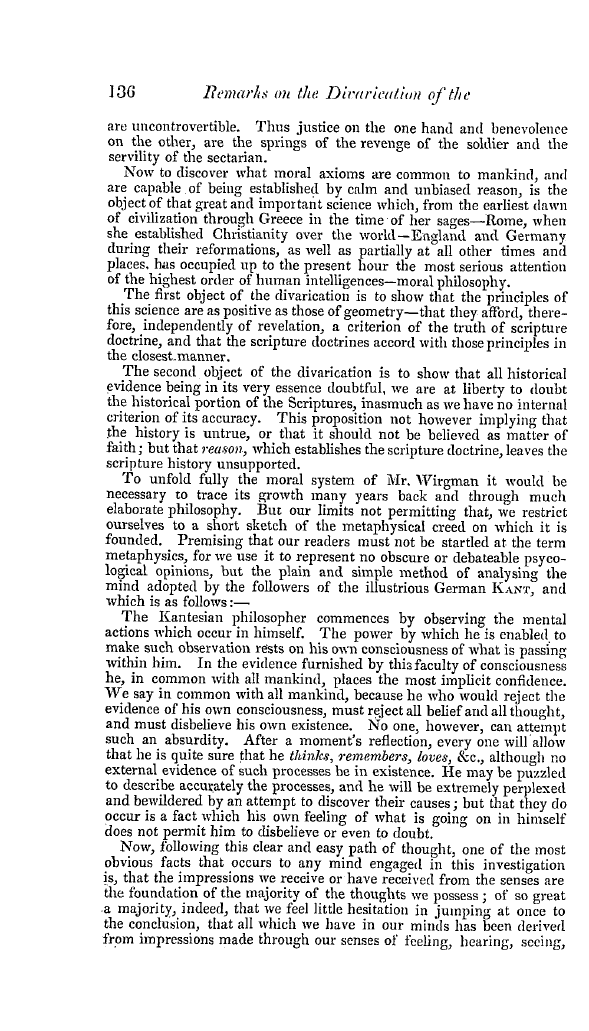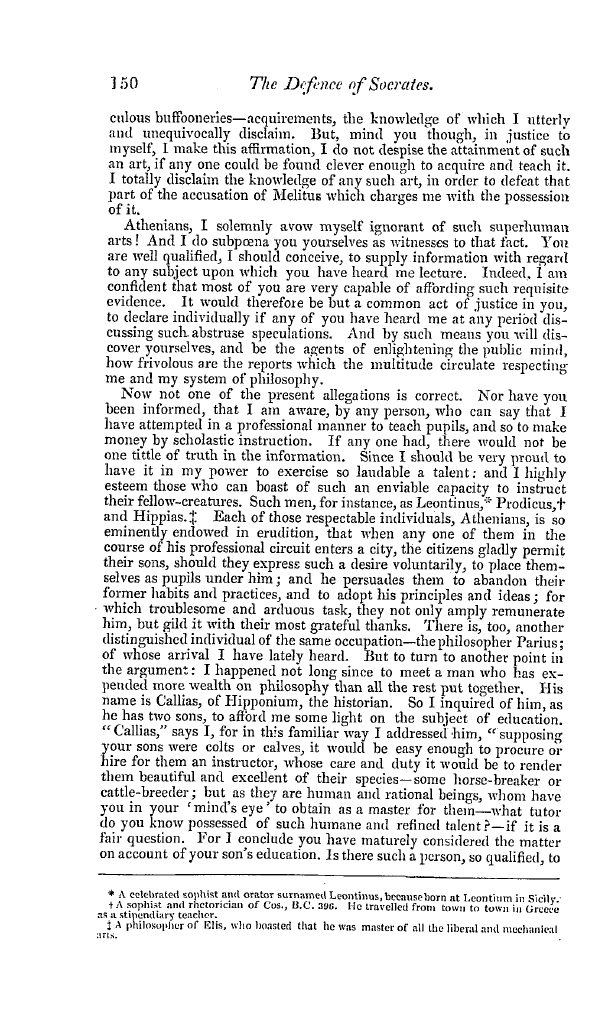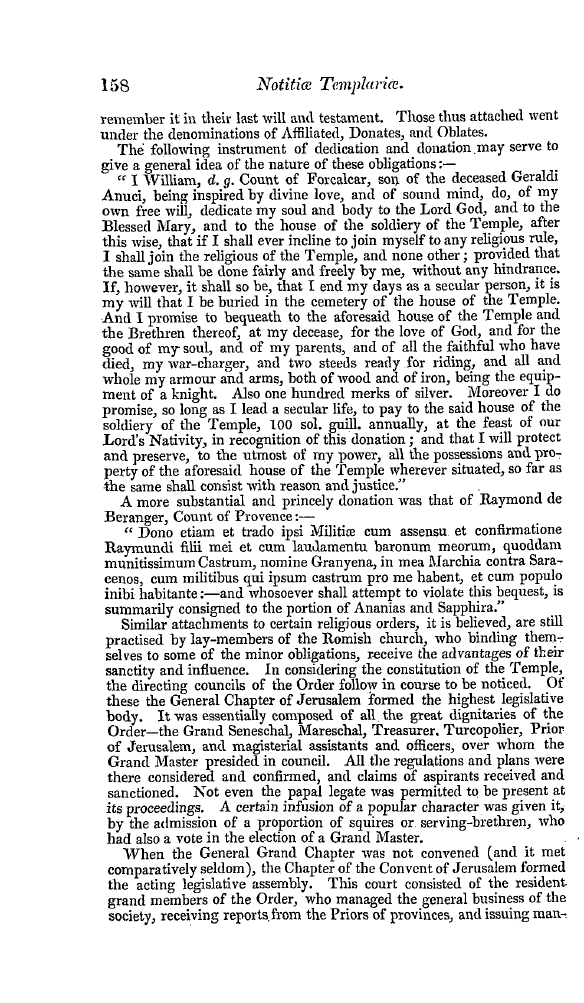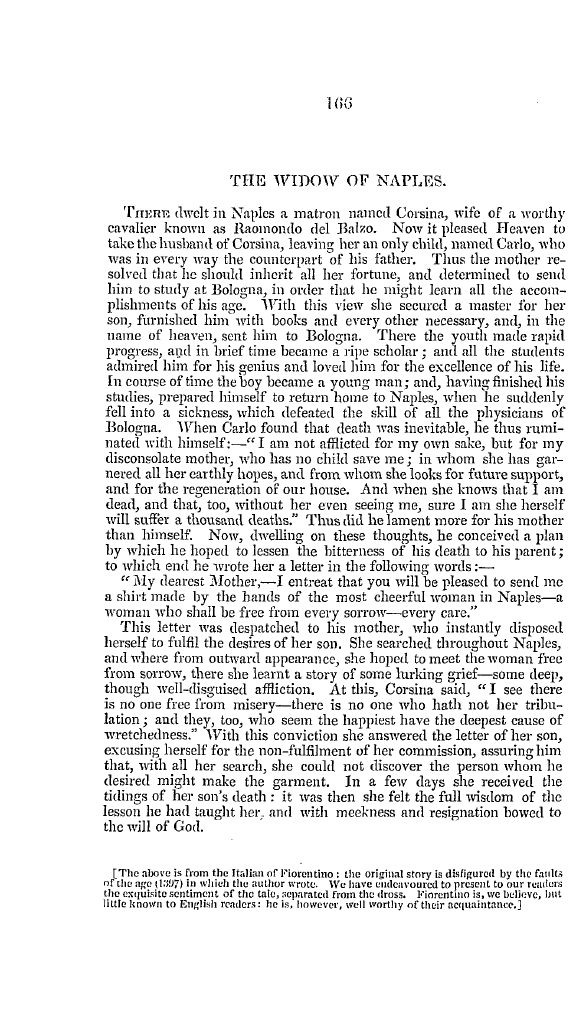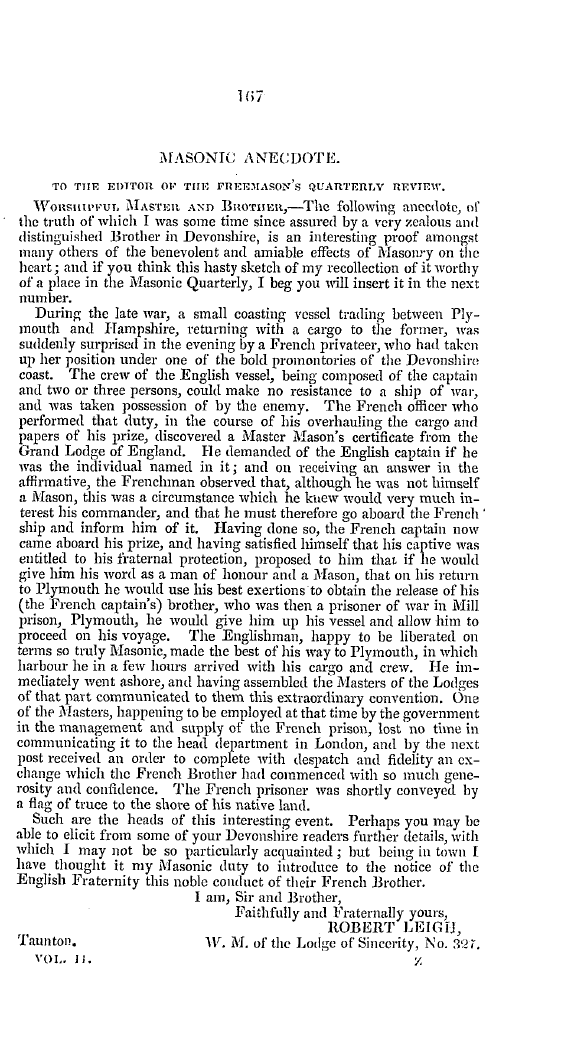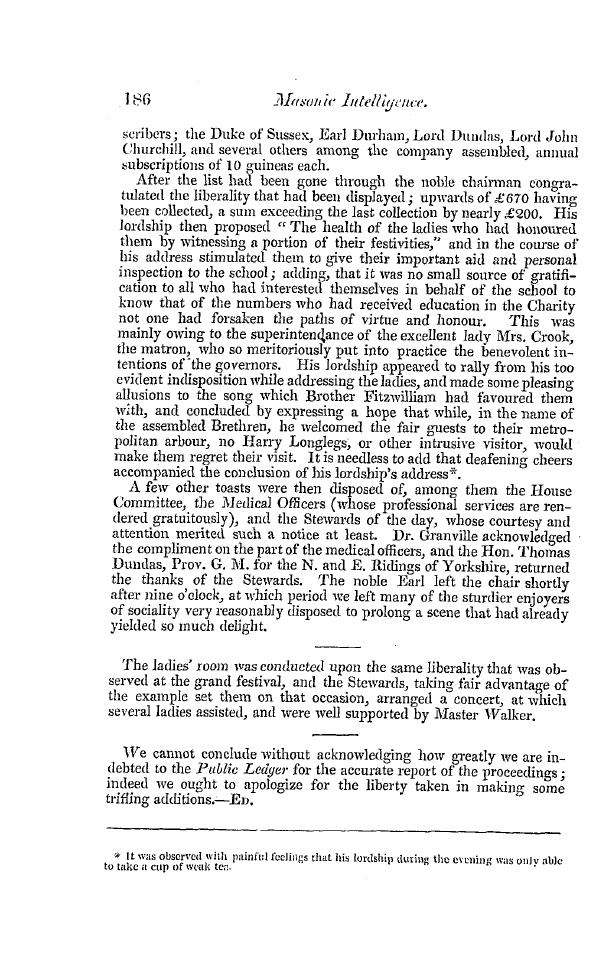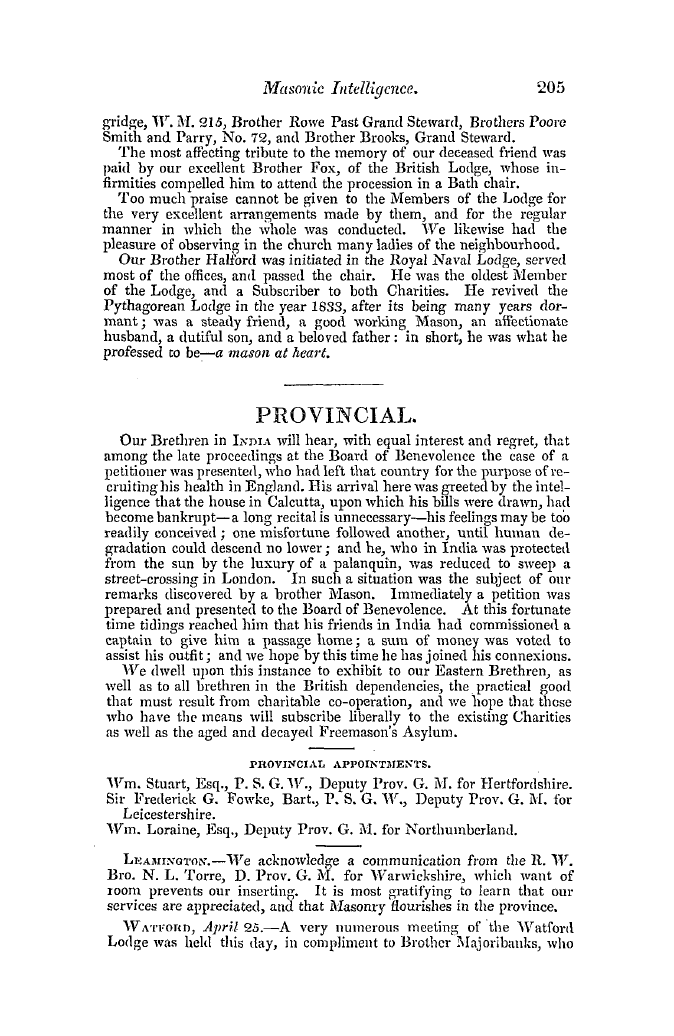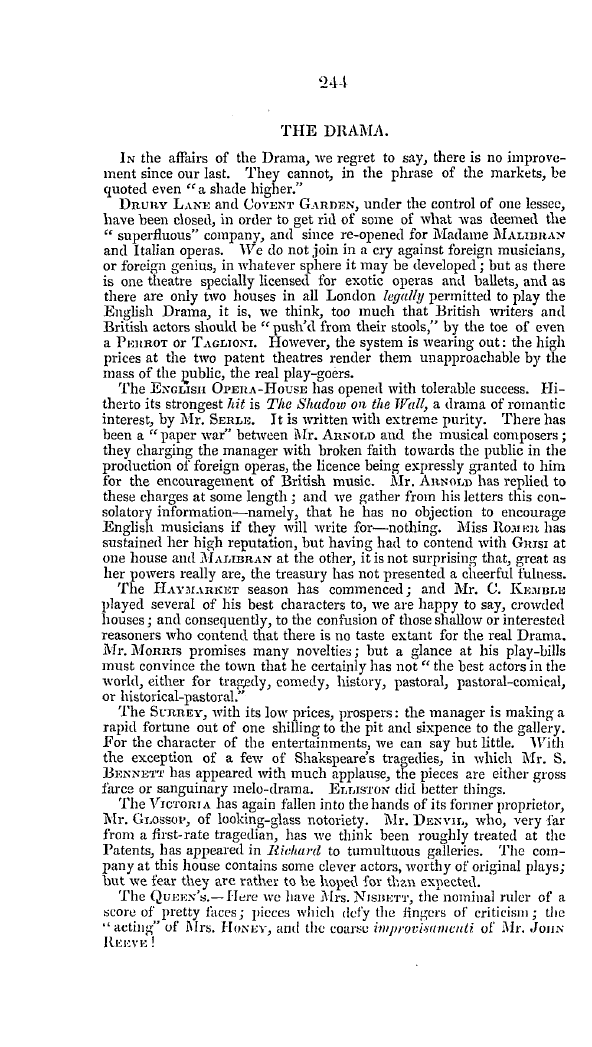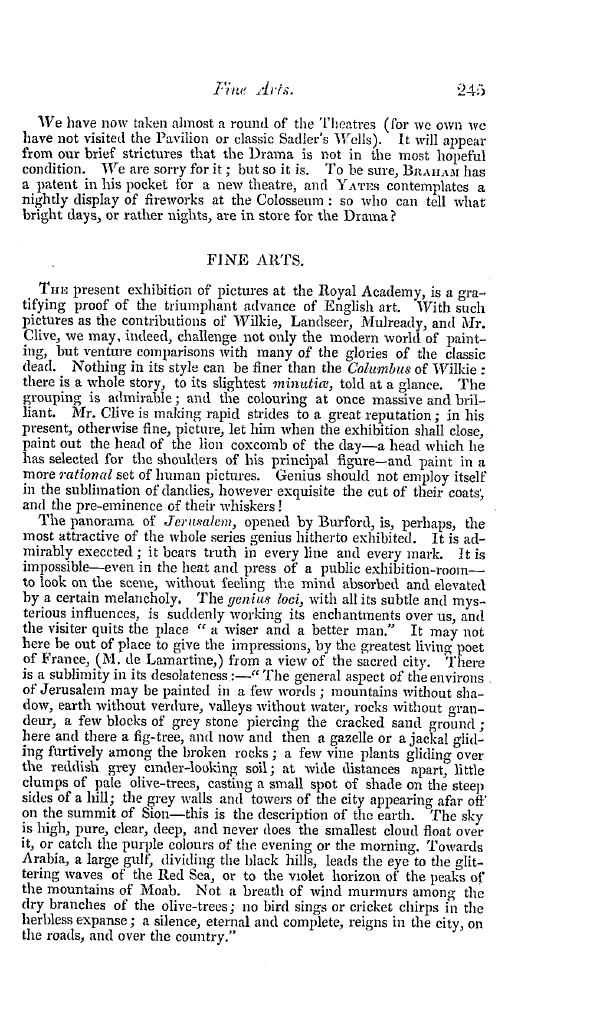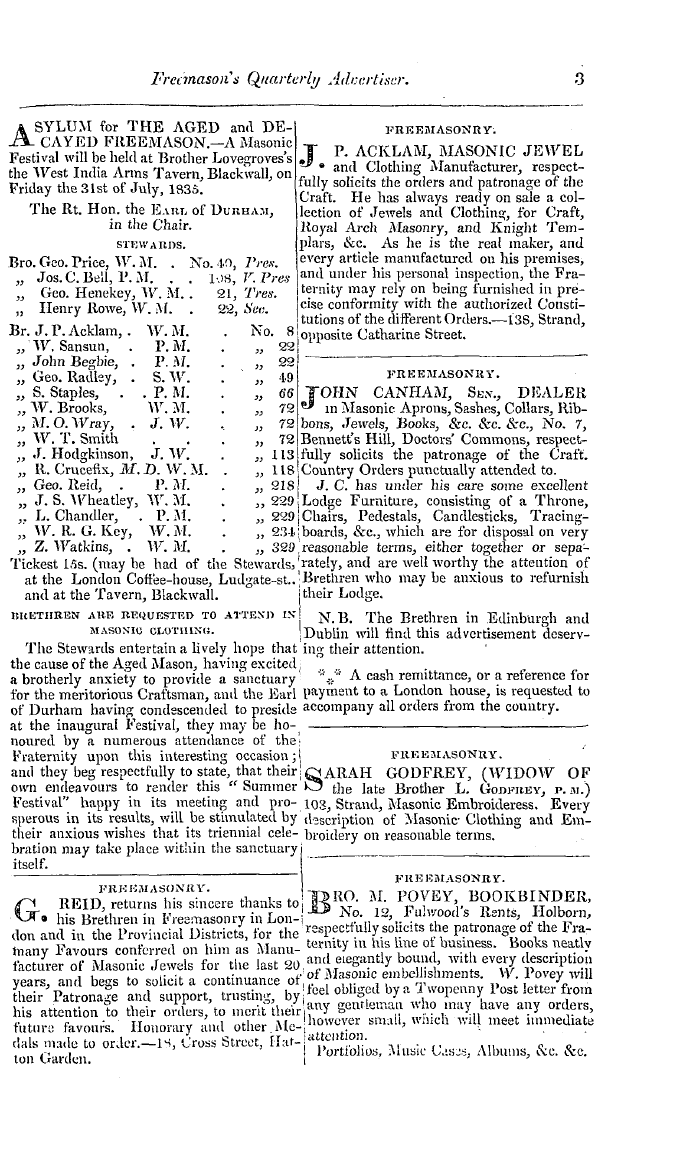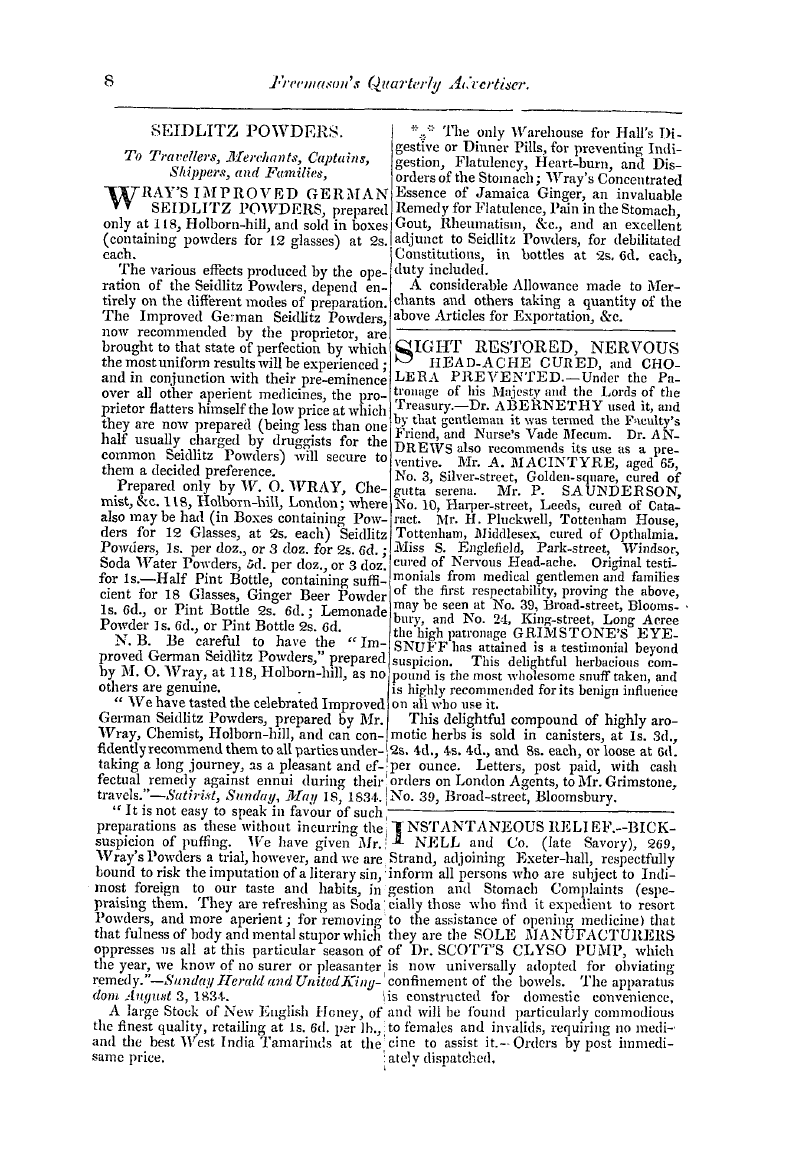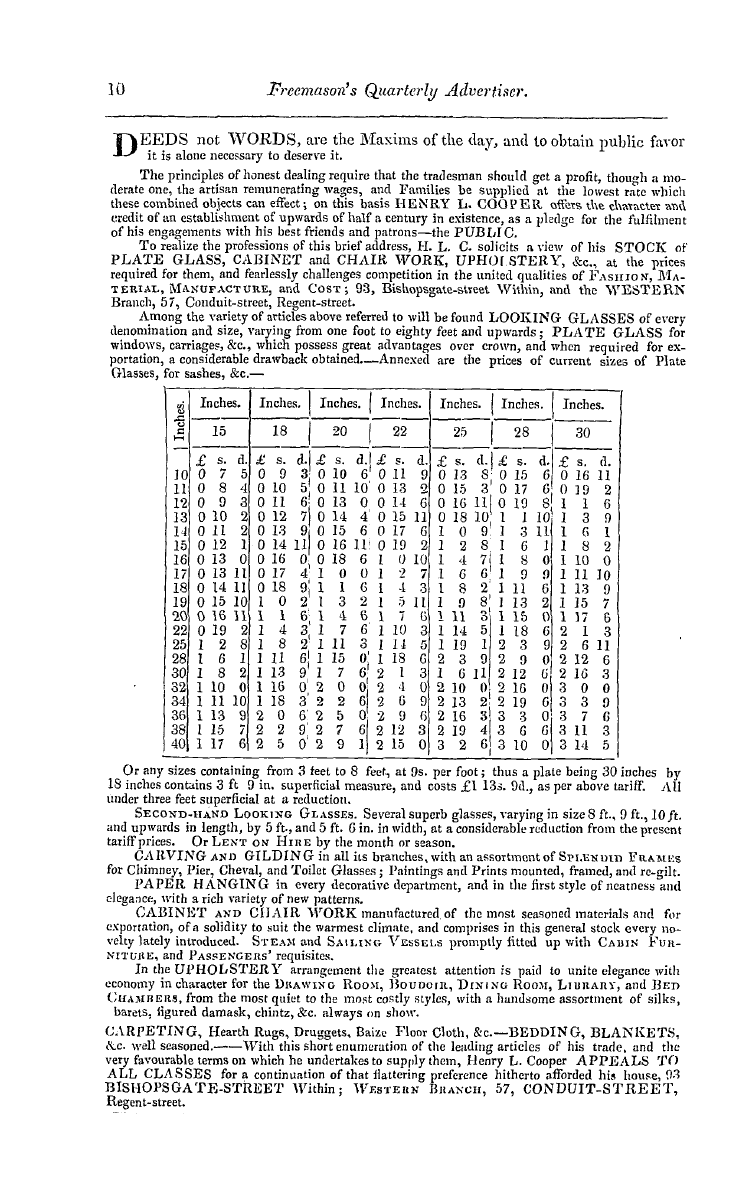-
Articles/Ads
Article NOTITIÆ TEMPLARIÆ, No. 4. ← Page 4 of 6 →
Note: This text has been automatically extracted via Optical Character Recognition (OCR) software.
Notitiæ Templariæ, No. 4.
the Cistertian Order ; but they were not allowed to wear the equestrian mantle , except such as had attained to the episcopal dignity as prelates of the Order . The folloiving was their formula of profession . "Ego \ _ nomen ~ \ Regulam commilitonum Christi , et militias ejus , Deo adjuvante , servare volo et promitto propter vitro a-terna : prscmium ; ita ut ab hoc die non liceat mihi eollum excutere de jugo Regular : et ut hae petitio professionis mete firmiter teneaturbanc conscriptam
obe-, dientiam in presentite fratrum in perpetuum trado , et manu mea' sub altare pono , quod est consecratum in honorem Dei Omnipotentis et Beata- * Marine et Omnium Sanctorum ; et dehunc promitto obedientiam Deo et huic Domui , et sine probrio vivere et castitatem tenere , secundum preceptum domini papa ? , et conversationem fratrum domus militias Christi firmiter tenere . " The receptions of the priests and of all classes of candidates were in
the name of the Trinity— "in nomine S . S . Trinitatis , Patris , Filii , et Spiritus Sancti ( et Beatte Maris - * , et Omnium Sanctorum ) te recipio et do tibi habitum Templi . " The third class of the Order was composed of the serving-brethren , or squires . In the early times of the society , these performed all the necessary work of attending to the stables and armouries of the Order , besides other domestic and camp duties ; but as the society increased in
numbers and wealth a sub-division of this class resulted , under the designation of Brother-artizans , whose members were solely employed in the workshops and smithies , and in cultivating the lands that accrued to the Order . Such was the effect of their rapid acquisition of power and of property , that in process of time the establishments of the Temple '
presented the spectacle of a little world of all-work within themselves , containing smiths and farriers , fanners and bakers , horse-breakers and breeders of stock , all engaged in their several occupations . In contradistinction to these handicraftsmen and labourers , the fighting squires or serving-brethren were termed the armourers or armour-bearers , many of whom were the sons of substantial and respectable yeomen , and were admitted to familiar intercourse with the knightsso much so
, as to be invited to sit ( below the salt no doubt ) at the same table with their masters , though in such cases they were allowed one dish less at meals . Their dress ( as has been noticed in the rule ) consisted of a black or dark-brown surtout , with the red-cross of the Order on the breast or shoulder ; their original white habit having been changed , owing to some impostors in the mountains of Palestine having at an
early period assumed tire equestrian character and costume , and , for some reason or other , given themselves out to be Knights-Templars , whereas they were not Templars at all . — " Dicentes se esse de Templo , cum sint de mundo . "—The serving-squires were bound exactly by the same rule as their superiors of the Order , and , with some obvious exceptions and modifications of form , the ceremony of their initiation was also the same . The array of the squires formed usually the second line in order of battle ; the knihts occupying the frontor post of honour
g , , in the fight . Such were the three great constituent classes of the Order ; though through the corruptions of time and circumstance , other individuals obtained a species of connexion with the Temple , receiving certain real or supposed benefits , upon the payment of considerable sums to its treasury , or binding themselves to support its interests every where , and
Note: This text has been automatically extracted via Optical Character Recognition (OCR) software.
Notitiæ Templariæ, No. 4.
the Cistertian Order ; but they were not allowed to wear the equestrian mantle , except such as had attained to the episcopal dignity as prelates of the Order . The folloiving was their formula of profession . "Ego \ _ nomen ~ \ Regulam commilitonum Christi , et militias ejus , Deo adjuvante , servare volo et promitto propter vitro a-terna : prscmium ; ita ut ab hoc die non liceat mihi eollum excutere de jugo Regular : et ut hae petitio professionis mete firmiter teneaturbanc conscriptam
obe-, dientiam in presentite fratrum in perpetuum trado , et manu mea' sub altare pono , quod est consecratum in honorem Dei Omnipotentis et Beata- * Marine et Omnium Sanctorum ; et dehunc promitto obedientiam Deo et huic Domui , et sine probrio vivere et castitatem tenere , secundum preceptum domini papa ? , et conversationem fratrum domus militias Christi firmiter tenere . " The receptions of the priests and of all classes of candidates were in
the name of the Trinity— "in nomine S . S . Trinitatis , Patris , Filii , et Spiritus Sancti ( et Beatte Maris - * , et Omnium Sanctorum ) te recipio et do tibi habitum Templi . " The third class of the Order was composed of the serving-brethren , or squires . In the early times of the society , these performed all the necessary work of attending to the stables and armouries of the Order , besides other domestic and camp duties ; but as the society increased in
numbers and wealth a sub-division of this class resulted , under the designation of Brother-artizans , whose members were solely employed in the workshops and smithies , and in cultivating the lands that accrued to the Order . Such was the effect of their rapid acquisition of power and of property , that in process of time the establishments of the Temple '
presented the spectacle of a little world of all-work within themselves , containing smiths and farriers , fanners and bakers , horse-breakers and breeders of stock , all engaged in their several occupations . In contradistinction to these handicraftsmen and labourers , the fighting squires or serving-brethren were termed the armourers or armour-bearers , many of whom were the sons of substantial and respectable yeomen , and were admitted to familiar intercourse with the knightsso much so
, as to be invited to sit ( below the salt no doubt ) at the same table with their masters , though in such cases they were allowed one dish less at meals . Their dress ( as has been noticed in the rule ) consisted of a black or dark-brown surtout , with the red-cross of the Order on the breast or shoulder ; their original white habit having been changed , owing to some impostors in the mountains of Palestine having at an
early period assumed tire equestrian character and costume , and , for some reason or other , given themselves out to be Knights-Templars , whereas they were not Templars at all . — " Dicentes se esse de Templo , cum sint de mundo . "—The serving-squires were bound exactly by the same rule as their superiors of the Order , and , with some obvious exceptions and modifications of form , the ceremony of their initiation was also the same . The array of the squires formed usually the second line in order of battle ; the knihts occupying the frontor post of honour
g , , in the fight . Such were the three great constituent classes of the Order ; though through the corruptions of time and circumstance , other individuals obtained a species of connexion with the Temple , receiving certain real or supposed benefits , upon the payment of considerable sums to its treasury , or binding themselves to support its interests every where , and





